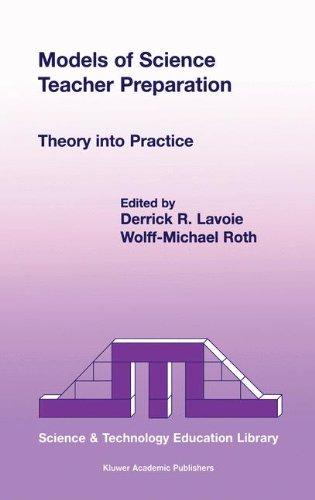

Most ebook files are in PDF format, so you can easily read them using various software such as Foxit Reader or directly on the Google Chrome browser.
Some ebook files are released by publishers in other formats such as .awz, .mobi, .epub, .fb2, etc. You may need to install specific software to read these formats on mobile/PC, such as Calibre.
Please read the tutorial at this link: https://ebookbell.com/faq
We offer FREE conversion to the popular formats you request; however, this may take some time. Therefore, right after payment, please email us, and we will try to provide the service as quickly as possible.
For some exceptional file formats or broken links (if any), please refrain from opening any disputes. Instead, email us first, and we will try to assist within a maximum of 6 hours.
EbookBell Team

4.1
70 reviews
ISBN 10: 0792371291
ISBN 13: 978-0792371298
Author: Lavoice, Roth
1 Wolff Michael Roth & Derrick R. Lavoie² 1 2 University of Victoria, Virtual Institute for Learning Resources The current reform in science education requires a substantive change in how science is taught. Implicit in this reform is an equally substantive change in professional devel- ment practices at all levels. (NRC, 1996,p. 56) In a continuously changing society, it is not surprising that education also undergoes continuous change. Science education is no exception, and perhaps changes are more rapid given the daily construction of new scientific knowledge. In such a c- mate of continuous change, the preparation of science teachers has to follow suit in order to be appropriate to the reforms that national organizations encourage. H- ever, whereas science teaching reform movements spawned recommendations of what teachers should know and be able to do in order for their students to concep- alize and process science (NSTA, 1997), they provide little guidance in terms of - the-classroom concrete implementation. Thus, while national science education organizations continue to refine their positions about teacher education, there is no mechanism for translating these positions and statements into science education courses that can improve the preparation and quality of p- service science teachers at both the elementary and secondary levels. (Yager & Penick, 1990. p. 670) It is therefore not surprising that there are voices that describe teacher prepa- tion as unsuccessful and as unresponsive to reform efforts (Schnur & Golby, 1995).
Chapter1 : Introduction
Chapter 2: Content
Chapter 3: Conclusion
Chapter 4: Appendices
Chapter 5: Glossary
Chapter 6: References
Chapter 7: Index
teaching models in science
a model science
instructional models for science
using models to teach science
science models for classroom
Tags: Lavoice, Roth, Teacher Preparation